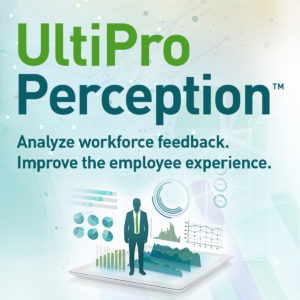 Despite our near obsessive fixation on “employee engagement,” this term remains largely amorphous and highly ambiguous, a subjective subject at best.
Despite our near obsessive fixation on “employee engagement,” this term remains largely amorphous and highly ambiguous, a subjective subject at best.
Inherently, HR knows that an engaged workforce is more satisfied in their jobs, more productive at work, and generally stick around for longer tenures and lower pay.
These are all outcomes, we can agree, by which HR should be both managed and measured.
Didn’t You Get the Memo? The Problem With Employee Engagement.
This explains the business case which justifies the significant chunk of change we spend each year on employee engagement initiatives, a staggering sum estimated to represent north of $1 billion dollars every year (that’s billion, with a “B”) annually in North America alone.
This trend is likely to continue for the foreseeable future, considering that as ubiquitous as employee engagement has become, only about 50% of employers report actively investing in related programs, products or services last year, meaning that only about 50% of the overall market for employee engagement solutions has even been tapped.
Stop and think about that for a minute. While HR and recruiting, as a rule, tend to be prodigious in their reckless spending on stuff they don’t need (see: employer branding consultants, “candidate experience platforms,” etc.) employee engagement represents by far the biggest money pit in an industry littered with them.

There’s no other category in HR Technology today which generates such dismal returns for such staggering investments, with companies throwing cash at a problem that remains as persistent as ever. In fact, according to a recent Gallup survey, a whopping 34.1% of all employees consider themselves “engaged” or “highly engaged,” a sad number by most every measure.
What makes it sadder is that this is a record high, with more employees feeling engaged at their jobs than at any point since Gallup began tracking employee engagement all the way back in January 2011. That’s right. For the billions we’ve spent on employee engagement solutions, we’ve still barely moved the needle. As stands, two out of three workers still feel that they are not “fully engaged in their work” nor “had sufficient support to cope with and resolve work situations.”
Were it any other function, as we’ve seen, HR would have long ago been shown the door for not making their numbers. So, what, exactly, are we getting wrong?
Standard Operating Procedure: The Problem With Employee Surveys.
The answer is simple: we’ve yet to reconcile the clear divide between data driven, scientifically validated approaches to performance management, and sweepingly unfocused, unscientific and qualitative annual or even irregular “pulse” surveys designed to quantify the unquantifiable.
The end result is that our intentional investment at seeing increases in employee engagement have yielded a return that’s not only not aligned to business objectives, but nearly impossible to take tangible steps or tactical actions to resolve after receiving the data of such surveys, even if these are administered in real time, all the time.
Surveys have the inherent limitation by which the results are never forward looking, and represent only a snapshot, not a strategy, for resolving employee performance issues.

The answer this problem is not creating surveys, or even expanding employee feedback mechanisms, which effectively check a box for “employee engagement,” but don’t actually align with workplace realities or the business’ bottom line.
This is because while we’ve become fairly adept at measuring employee engagement, but fail to actually capture the real data needed to improve business results or meet the actual needs and wants of the employees they purport to measure.
Reconciling these two disparate approaches to talent management requires rethinking the way we monitor and measure performance. That’s why it’s time HR takes yet another page from the marketing playbook. Unlike branding, however, this discipline is quantifiable, measurable and actionable.
It’s time for HR to finally put their money where their “big data” and “employee engagement” mouths are. It’s time for HR to finally figure out how to implement sentiment analysis into their ongoing programs and initiatives.
Why Sentiment Analysis is the Future of Employee Engagement.
 Sentiment analysis, which first got its start in market research, was first implemented as online review sites like Yelp! (and, closer to home, Glassdoor) began to move from the margins to the mainstream.
Sentiment analysis, which first got its start in market research, was first implemented as online review sites like Yelp! (and, closer to home, Glassdoor) began to move from the margins to the mainstream.
Companies wanted to know how customers and consumers really felt about their products – and how those perceptions stacked up against the competition.
Coupled with the rise in review aggregation and machine learning algorithms, companies soon discovered that they could go beyond what was ever possible by simply using focus groups (effectively, the marketing equivalent of employee satisfaction surveys) and get a comprehensive, actionable and accurate look at public perception.
The resulting discipline of “sentiment analysis” has been widely adopted by companies externally.
Today, the time has come to finally adopt these approaches by turning sentiment analysis methodology internally – and finally figuring out what real employees think about their jobs, surface actual trends and actionable tactics and start realizing return on their employee engagement investment.
While many enterprise employers have adopted this technology to understand the market, few have used sentiment analysis to accurately understand and identify performance related problems. But the inherent possibilities of using sentiment analysis are obvious, and likely inexorably intertwined with the growing ubiquity of machine learning technology within the HR and recruiting functions today.
Employee engagement, for example, can be easily moved from an arduous and arbitrary annual process to social network analysis, real-time mood tracking and monitoring of employee communications like emails or social media updates for natural language which measures not just what workers are doing, but how they’re feeling, too.
True innovations don’t result simply from understanding data, but having the right information to implement change and catalyze action; this means increasingly, HR and talent leaders must stop focusing on the quantity of “big data,” but rather on the quality of the data and generating actionable analysis and tangible tactics from the data they do collect.

Employees, for example, exchange an estimated 2 billion emails every day at enterprise employers, but without understanding recurring topics, themes or the emotions at play, these potentially meaningful sources of aggregate data become independently worthless. Similarly, for all the fixation on social media recruiting and the impact of employer reviews, few companies understand the context behind this content, nor can they proactively use these tools to improve employee performance and business outcomes.
The technology for bridging the divide between the emotive world of HR and the data driven world of employee performance exists, and it’s incumbent on employers to start figuring out how to turn this science into strategy, and how to turn employee perceptions into concrete applications.
When it comes to sentiment analysis, the good news is, the future of HR is right now.
Editor’s Note: This post was sponsored by our friends at Ultimate Software, and RecruitingDaily received compensation for publishing this post. We bet you probably figured that out by now.
Now that we’ve got that disclaimer out of the way, we still think that UltiPro Perception is actually a pretty kick butt tool, and if you’re a talent leader, this is one SaaS solution that’s definitely worth checking out for yourself.
Click here to register for an interactive tour of UltiPro Perception and see what sentiment analysis can do for you.
Authors
Matt Charney
Matt serves as Chief Content Officer and Global Thought Leadership Head for Allegis Global Solutions and is a partner for RecruitingDaily the industry leading online publication for Recruiting and HR Tech. With a unique background that includes HR, blogging and social media, Matt Charney is a key influencer in recruiting and a self-described “kick-butt marketing and communications professional.”
Recruit Smarter
Weekly news and industry insights delivered straight to your inbox.





